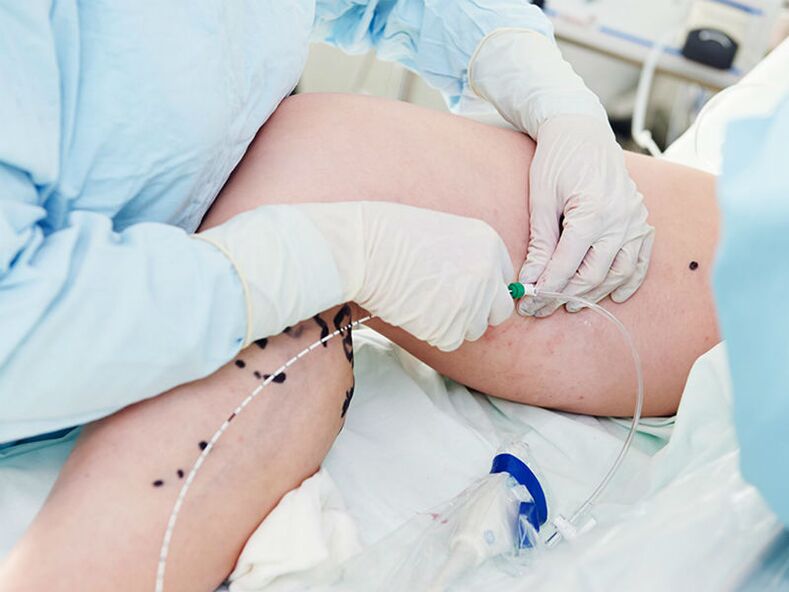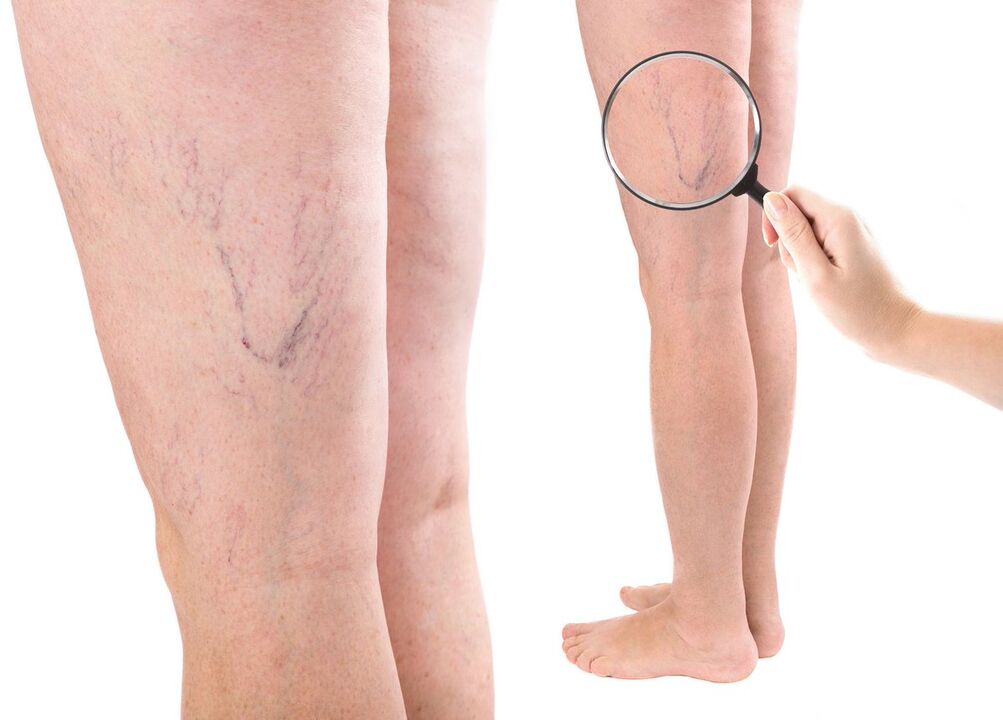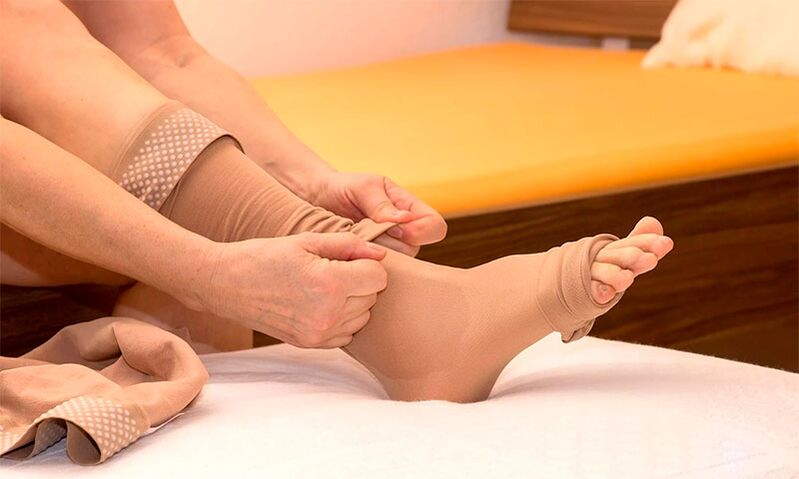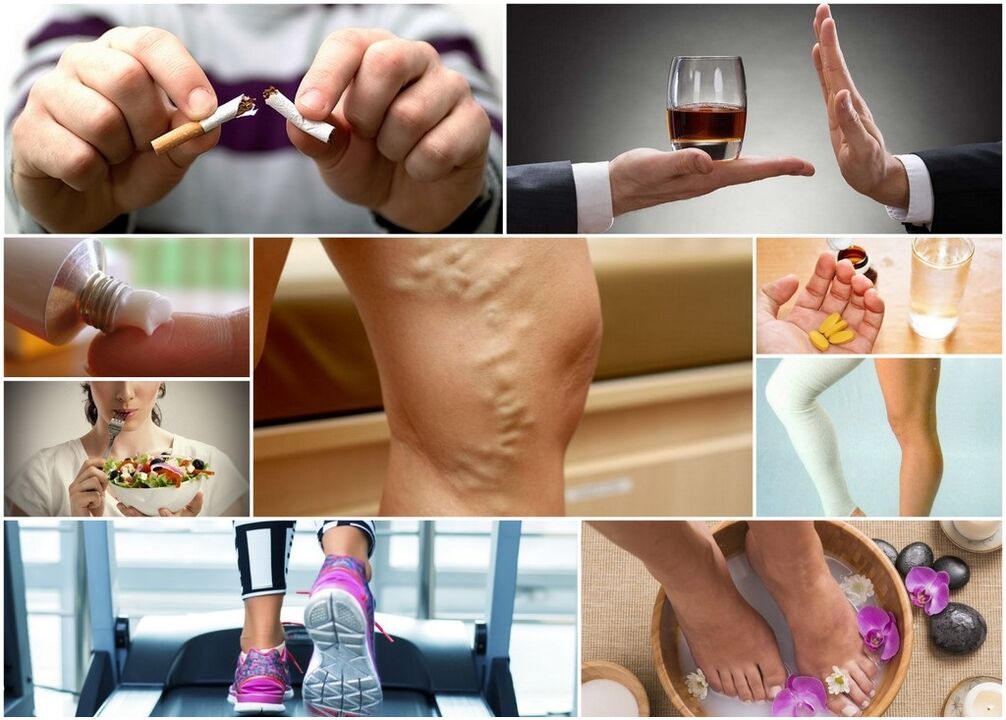Varicocele (varicocele) - A disease with increased venous diameter becomes a winding. Usually, this is due to impaired working of the venous valve.

Intravenous system. Characteristics of venous structure.
Venous blood vessels are part of the cardiovascular system, which bring blood from surrounding tissue to the heart. The view that venous blood always flows through the veins, and the arteries always flow through the veins. In fact, this is not always the case. For example, the pulmonary artery transmits venous blood from the heart to the lung, and the pulmonary veins return from the lung to the arterial heart.
In many arteries, blood flows under high pressure, so their dense walls. In contrast, in veins, blood pressure is very low, so their walls are thinner and have less density. In the lumen of many veins, there are valves - they bleed in only one direction, causing them to advance. The valves are only not present in the veins of the head and neck because they are above the heart and the blood flows down freely.
What happens to veins? The nature of varicose veins.
The walls of lower limb veins are forced to continuously develop increased loads as blood flows through these blood vessels occurs against gravity. The main mechanisms that cause varicose veins:
- overstretching of the venous wall;
- Destruction of venous valves.
It is entirely possible to say exactly why these pathological changes occur in the vein. There are some factors that increase the risk of varicose veins.
Causes of varicose veins
Factors that increase disease risk:
- director. This factor exists for everyone. The legs are remote from the heart of the body, and when standing and walking, the legs are below the rest. Venous blood is the hardest to recover the heart from under your feet.
- age. As the venous valve increases, the risk of varicose veins increases. They stop closing completely so that a small amount of blood can flow in the opposite direction. She stopped in the veins in her legs, not back into her heart.
- ground. Women suffer from varicose veins more frequently than men. During pregnancy, after menopause, before menopause, hormonal changes in the female body promote this. Female sex hormones help relax the walls of veins.
- Hormone replacement therapy and oral contraceptive pills.
- Genetic. The more members of your family have varicose veins in the lower extremities, the higher your risk is.
- obesity. The extra pound helps increase the load on the cardiovascular system. The pressure in the vein increases.
- Stand or sit for a long time. This causes blood to stagnate in the veins in the lower body. For example, office staff, surgeons and other people who "stand" and "sit" work often suffer from varicose veins.
- Pregnant. During pregnancy, women suffer from varicose veins much more frequently than in other periods of veins. This is due to certain physiological changes in the pregnant woman's body.

Signs of varicose veins
- Significant dilation of subcutaneous veins. They increase under the skin, winding and visible. The diverse veins most often look like grains, are blue or dark purple "worms". Such images only occur in varicose veins below the skin. If the vein containers that affect the depths of the fabric are affected, it is impossible to pay attention outward.
- Feeling of severity in the legs. Usually, it occurs or intensifies after intense physical effort in the evening and at night.
- All kinds of unpleasant feelings. It could be a burning feeling, a pulsating feeling, tingling, numbness.
- Swelling of legs. The stagnation of blood in varicose veins leads to the fact that fluid begins to linger and accumulates in the tissue. Usually, edema is closer at night, firstly on the feet only. As the outflow of blood invading the venous blood increases, swelling extends to the buttocks.
- Muscle spasms. When a person lasts for a long time, they are generated by violating the blood supply of the tissue.
- Leg pain. Not all patients are worried. Long-term status strengthened.
Complications of varicose veins
In most patients, varicose veins do not cause complications. But the following states may occur:
- bleed. If the skin is damaged in the varicose area, bleeding can occur, which may not stop for a long time. In this case, you need to lie down, lift your legs and press on the bleeding area. If the blood continues to bleed, you need to consult a doctor.
- Ulcers of varicose veins. Very painful, usually located on the ankle. Ulcers occur due to impaired blood supply to tissues in the edema and varicose veins. Usually, the ulcer has a pale spot on the skin. If this complexity occurs, you need to consult your doctor immediately.
- Thromboembryonic varicose veins. The condition of blood clots growing and inflammation on the venous walls. In the damaged area, heat, redness, and pain will occur. Often, due to this complication, doctors prescribe compressed flax, painkillers.
- Chronic venous deficiency. Due to the damaged blood supply, the exchange of oxygen, nutrients and waste products between the skin and blood can be disturbed. Chronic venous deficiency increases pathological risks such as eczema, hard skin, nutritional ulcers.
- Intravenous eczema (stagnant dermatitis). Skin lesions are caused by stagnation of venous blood and edema. The main symptoms are: erythema, skin peeling, and itching in the varicose veins.
- Uneasy leg syndrome. It is characterized by an unpleasant feeling of legs that occurs when still. Patients must keep moving, which is why sleep is often disturbed.
Compressed flax for varicose veins
Compression tube socks and elastic bandages with varicose veins compress the vein-diffusion veins, thereby improving blood circulation. Usually, compressed underwear wraps the legs around the ankles tightest, gradually becoming more free. It helps the blood move toward the veins in the direction of gravity reverse intensity - until the heart.
Many patients have noticed that compression stockings and elastic bandages help deal with discomfort, pain, edema.
Although compressed flax helps improve blood flow and cope with certain symptoms, it does not cure varicose veins. During the study period, ambiguous results were obtained, so scientists could not say whether compressed tube socks help eliminate or prevent varicose veins.

Variety of compressed flax:
- Stockings and tights. The most common type of compression laundry. Stockings reach hips, leggings - to waist. Compression leggings are the most convenient because they are securely secure and do not slide.
- golf. They reach the knee. Often used by men. There are different models.
- Elastic bandage. There are different lengths and can only be used to bind lower legs or lower legs and hips. This is the cheapest, but most uncomfortable compressed linen. The bandage must be longer than wearing leggings or stockings, and it keeps sliding. By adjusting the strength of the bandage, the degree of compression can be manually controlled and not always sufficient.
Varicocele operation
There were obvious varicose veins on the legs and they resorted to surgery. This procedure is usually performed under general anesthesia. In most cases, the patient is discharged from the hospital on the day of the surgical intervention. If the surgery is performed on both legs, it may be necessary to stay overnight in the hospital.
Varicocele has different types of surgical treatment.
Dressing and removing swelling veins
Two incisions were made: one in the groin and the other in the ankle, knee or another. In the upper part, find, bandages and crosses. Through it, extend a special thin wire to the lower part and pull it together with the bottom. Removing surface veins will not affect the blood supply to the legs, as its function will have deep veins.
Possible complications of dressing and vein removal:
- The formation of massive bleeding;
- bleed;
- pain;
- A very rare complication is deep venous thrombosis.
This postoperative performance recovery in most patients occurs within 1-3 weeks. All the time, you will have to wear compression stockings. If there is venous insufficiency, compressed underwear must be used in the long run.
Sclerotherapy
During this process, a special substance is introduced into the vein, which damages its walls from the inside and causes the lumen to overlap. Diversification takes place within a few weeks. Sometimes, medications must be taken several times.
Radio frequency ablation
This technology provides the technology to heat the venous walls using radio frequency energy. Procedure:

- Make a small incision above or below the knee and enter Vienna.
- Under ultrasound control, a catheter (semi-flexural tube) was performed intravenously.
- Then, through the catheter, the doctor performed a probe that emitted radio frequency energy.
- The energy emitted by the probe heats the vein wall from the inside, causing it to burn and close the cavity of the container.
Typically, this procedure is performed under local anesthesia without the need for anesthesia. During the procedure, patients may experience a small unpleasant feeling similar to a pin injection. Sometimes a small skin burn occurs. Compressed linen must be worn within a few weeks after radiofrequency ablation.
Treat varicose veins with laser
The lumen that closes the vein may also be caused by radiation from the internal laser irradiating its walls. Procedure:
- Introduce the catheter into the patient's vein.
- The laser radiation source is carried out through a catheter to Vienna.
- The laser causes venous heating, which burns the walls and lumen ceilings inside.
- The surgeon directs the laser rays under ultrasound control and gradually burns the venous walls.
Typically, laser treatment of varicose veins is performed under local anesthesia. The procedure is effective in 98% of cases.
Varicocele exercise
Treating gymnastics may be beneficial for varicose veins. Below we will consider the easiest exercises, but you must definitely consult a doctor before implementing them. Only your doctor can tell exactly which loads are not contraindicated and can benefit.
How Gymnastics Helps Varicocele:
- Improve vein and lymphatic efflux;
- Improve blood supply to the lower limbs;
- Increase the tone of the venous wall;
- Improvement of blood circulation in small blood vessels;
- Strengthens the muscles of the legs and increases endurance.
Varicocele massage
Massage can be used for varicose veins, but it is not always the case, depending on the severity and the extent of the complications. Don't engage in self-quality, it's best to contact a professional massage therapist.
Massage of varicose veins can help reduce symptoms such as swelling, convulsions, numbness and other discomforts. It reduces muscle tension and helps restore normal tone of the venous walls. Related to veins of varicose veins, massage is often combined with physical therapy exercise.
How to deal with varicose veins at home?
Some measures can be used independently to slow down the progression of varicose veins and reduce the accompanying discomfort:

- Physical exercise. Walking helps strengthen the muscles in the legs and improves venous blood outflow. Consult your doctor and he will recommend a level of physical exercise that suits you.
- Maintain a healthy weight. Adhere to a healthy diet. If you are overweight or obese, try to get rid of the extra weight. Consult a nutritionist: Experts will make suggestions on the nature of the food in your case.
- Choose clothes correctly. Do not wear high-legged shoes, tight linens and vein-squeezing clothes.
- Lift your legs. It would be very good if you can take a regular break and raise your legs to heart level. When you are sleeping or lying in bed, place 3-4 pillows at your feet.
- Sitting or standing for a long time. Try moving every 30 minutes.
- Do not place your feet on your legs while sitting. As a result, the veins are squeezed and the blood flows out is even more disturbing.
Prevent varicose veins
It is impossible to completely prevent varicose veins. If already occur, existing preventive measures can only help delay the disease or slow its progression.
- If you have to sit or stand for a long time, be sure to take a break. Walk, walk away. If possible, you can lie down and raise your legs.
- Try to keep your legs in a raised position while sitting, resting, and sleeping. Sometimes it’s useful to go to the sofa or floor to lift your legs and hold them against the wall.
- The higher your legs are above the heart level, the better your veins are.
- Doing physical exercise can help strengthen the muscles in the legs. Therefore, blood flow will be improved through the veins.
- If you are overweight or obese, try losing weight. This not only reduces the risk of varicose veins, but also has a positive impact on the condition of the entire cardiovascular system.
- Don't wear narrow clothes, especially those on the waist, groin, and legs. Therefore, blood flowing through the veins may worsen.
- Try wearing as few high heels as possible. Therefore, the tone of the muscles in the legs is disturbed and they no longer help push blood through the veins.

















